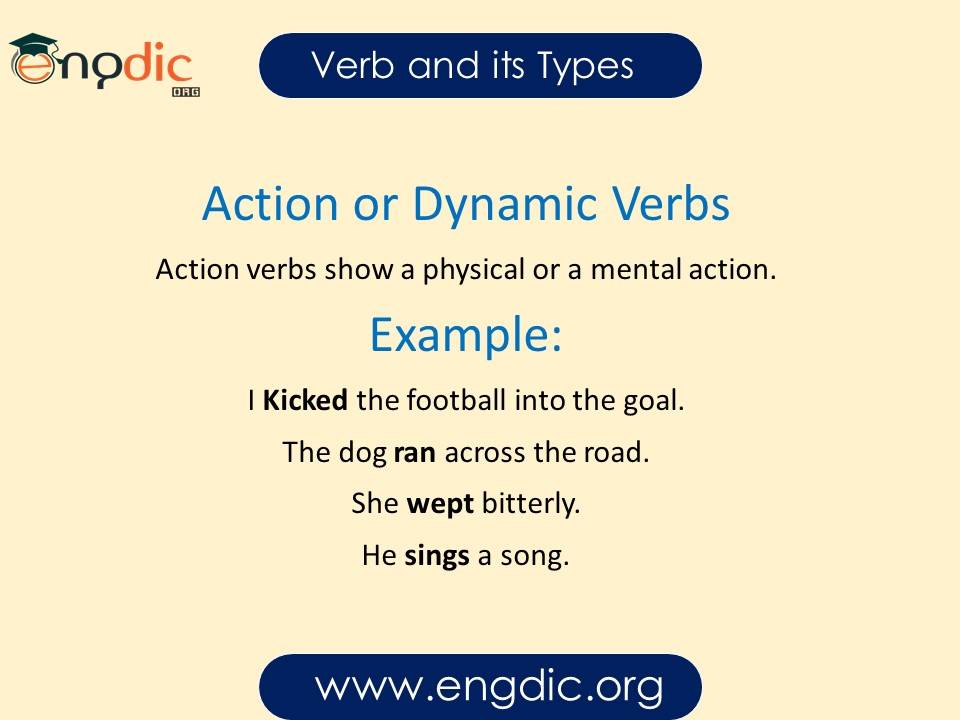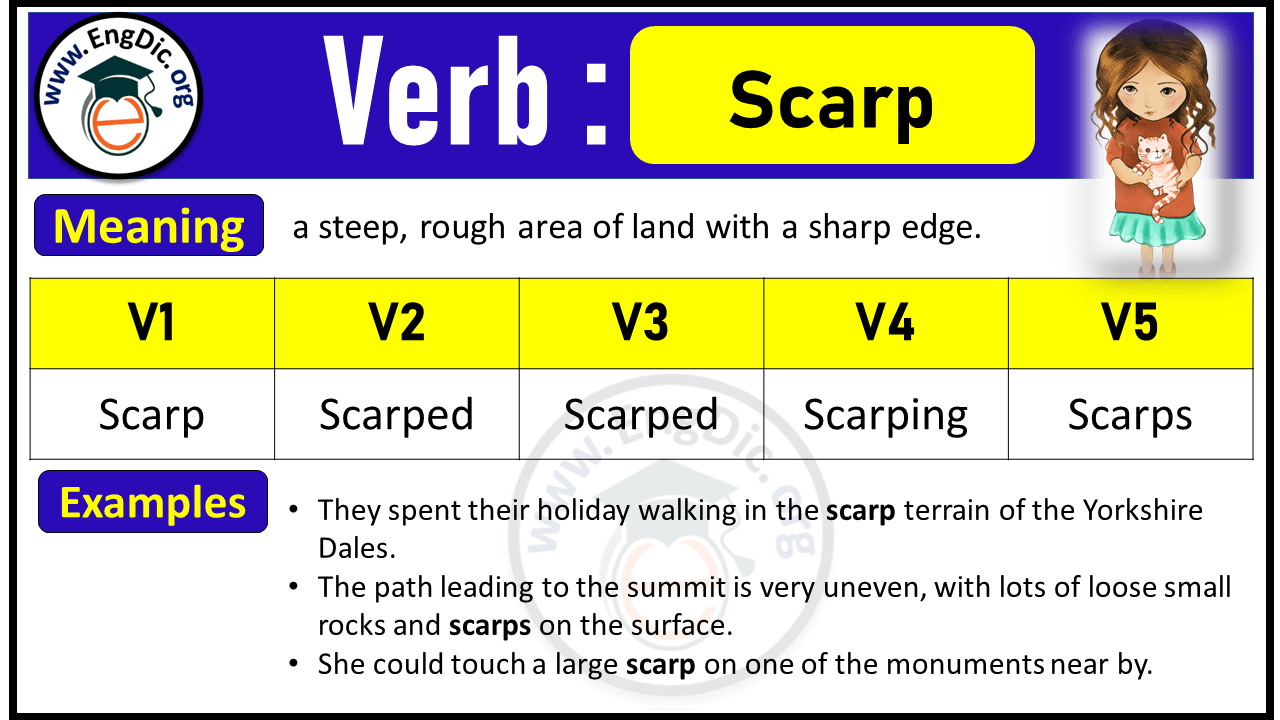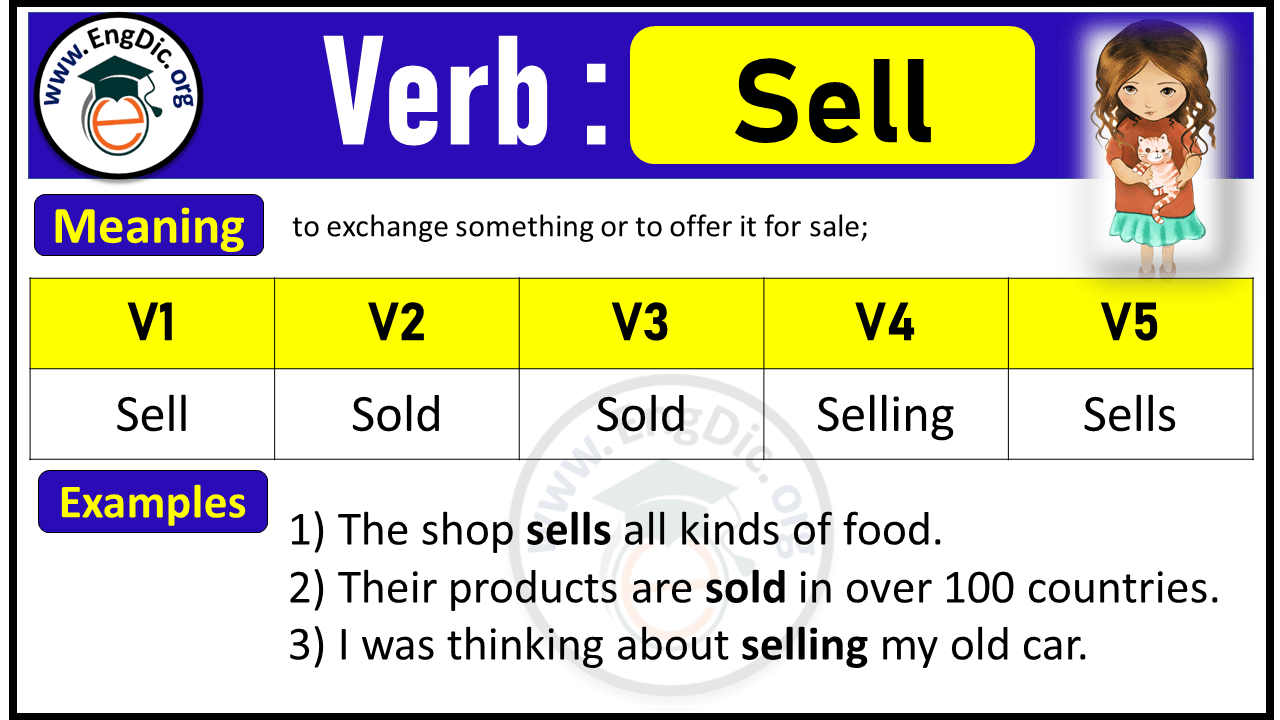What is a Verb? A verb is a doing word. It expresses some action. In the following examples, the verbs are given in bold font.
- I teach English.
- She eats bread.
Types of Verb
What are the types of verbs? These are the basic types of verbs. These types of verbs are very important for those who want to improve their grammar mistakes in English.
- Lexical Verbs
- DE lexical Verbs
- Stative/Being Verbs
- Non-Continuous Verbs
- Auxiliary/Helping Verbs
- Modal Verbs
- Linking Verbs/COPULA
- Regular Verbs/Weak Verbs
- Irregular Verbs/Strong Verbs
- Transitive Verbs
- Intransitive Verbs
- Ergative Verbs
- Phrasal Verbs
- Reflexive Verbs
- Finite Verbs
- Infinite/Non-Finite Verbs
Types of Verb – Video
In this video verbs and their types are explained briefly with examples.
Verb and its Types
Action or Dynamic Verbs
Action verbs show a physical or mental action.
Example:
- I Kicked the football into the goal.
- The dog ran across the road.
- She wept bitterly.
- He sings a song.
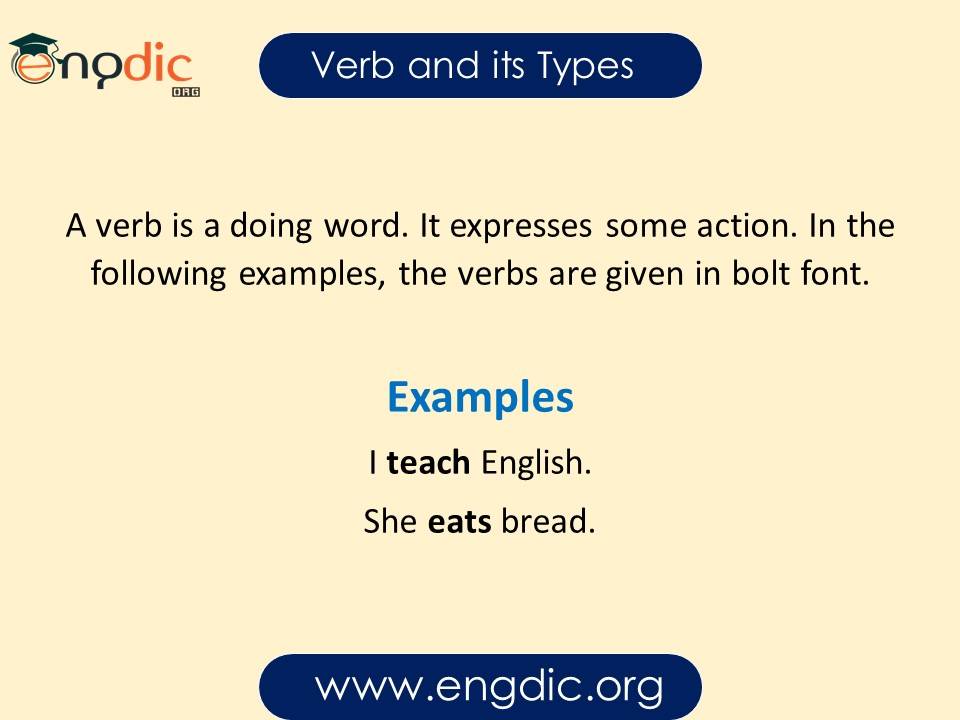
Lexical Verbs
Lexical verbs carry their full meanings. They give real information. They do not rely on other words to convey their meanings. They are also termed the main verbs or full verbs. They stand in contrast with de-lexical verbs that convey only a partial meaning. They also stand in contrast with auxiliary verbs that convey only the grammatical meanings.
Examples:
- She cried loudly.
- She laughed softly.
- De-lexical Verbs

De-lexical verbs
De-lexical verbs have very little meaning of their own. They rely on the following nouns to convey clear meanings. Some common de-lexical verbs are: take, make, have, give, etc.
Examples:
- I took a shower.
- I had a drink.
- He gave a loud laugh.
- She made a noise.

Static/Being Verbs
Static verbs describe a state rather than an action. They are not usually used in the present continuous form. A few such verbs are:
Be, have, like, prefer, understand, belong, doubt, love, hate, know, want, need, own, see, hear, smell, believe, remember, etc.
Examples:
- She is a good reader.
- He seems to be sad.
- I like swimming.
- Moon belongs to a noble family.

Note: Some verbs can be used both as Stative verbs and action verbs. Some such verbs are: have, think, feel, look, smell, taste.
For Example:
- I have a Jeep. (used as a static verb)
- I am having a bath. (used as a static verb)
- I think you are a good player in hockey. (used as a static verb)
- I am thinking about buying a car. (used as a static verb)
- She looks busy. (used as a static verb)
Non-Continuous verbs
Non-continuous verbs are used in continuous form. They are not used in progressive tenses. They are short of Stative verbs. They tell us about some states, not an action. Some such verbs are:
Be, want, cost, seem, need, care, contain, owe, exist, possess, own, belong, like, love, hate, dislike, fear, envy, mind, etc.
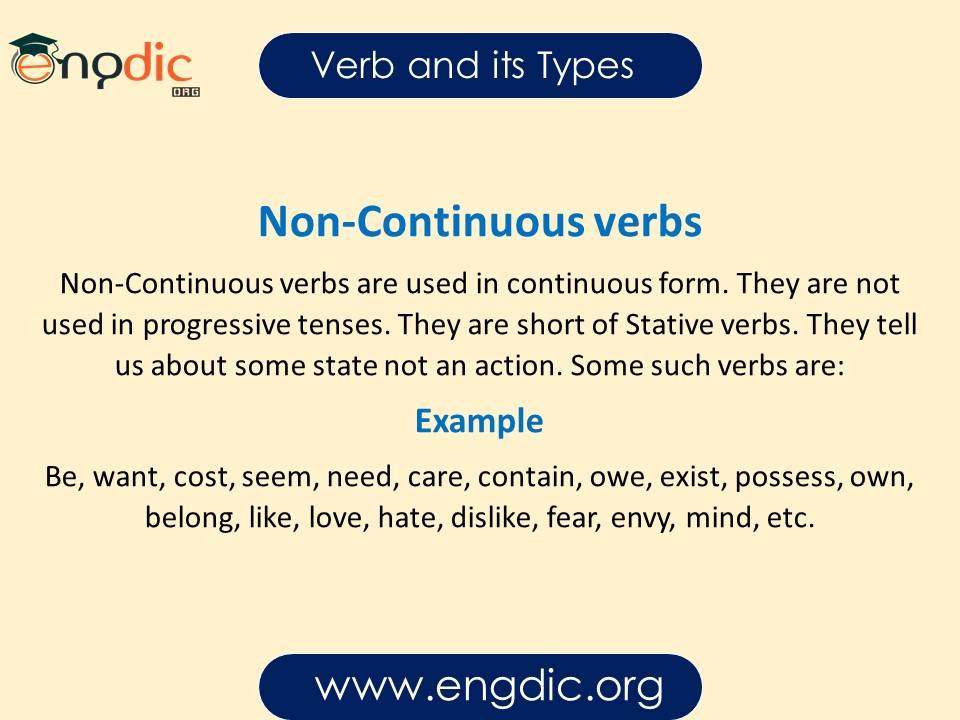
Auxiliary Verbs / Helping Verbs
Auxiliary verbs precede the main verbs. They express grammatical meanings only. They help the main verbs to express their mood, tense, or voice. Some common auxiliary verbs are: be, do, have, etc.
Examples:
- He is reading a book.
- She was waiting for his brother.
- We have eaten breakfast.
Modal verbs
Modal verbs are a kind of helping verbs. They show the mood of a verb such as ability, possibility, obligation, permission, advice, or some other mood.
These verbs always come before the main verb. Modal verbs are can, could, may, might, shall, should, will, would, must, and ought to.
Examples:
- I can win the race.
- You should have a walk daily.
Linking verbs/Copula
A verb that joins the subject to a complement. Here are some common linking verbs:
Be seem, look, feel, taste, smell, sound, grow, remain, prove to stay, etc.
Examples:
- She is happy.
- She looks sad.

Regular Verbs/ Weak Verbs
Regular verbs form their past simple and past particle by adding “-ed” to their base form; For example, laugh-laughed-laughed; look-looked-looked.
Examples:
| infinitives | Simple Present | Past simple V2 | Past Particle V3 | Present Participle |
| To advise | Advise | Advised | Advised | Advising |
| To allow | Allow | Allowed | Allowed | Allowing |
| To enjoy | Enjoy | Enjoyed | Enjoyed | Enjoying |
| To rain | Rain | Rained | Rained | Raining |
| To smile | Smile | Smiled | Smiled | Smiling |
Irregular Verbs/ Strong Verbs
Irregular Verb forms their past simple and past participle in different ways; for example, buy-bought-bought, eat-ate-eaten.
Examples:
| infinitives | Simple Present | Past simple V2 | Past Particle V3 | Present Participle |
| To know | Know | Knew | Known | Knowing |
| To go | Go | Gone | Gone | Going |
| To drink | Drink | Drank | Drunk | Drinking |
| To hold | Hold | Held | Held | Holding |
| To write | Write | Wrote | Written | Writing |
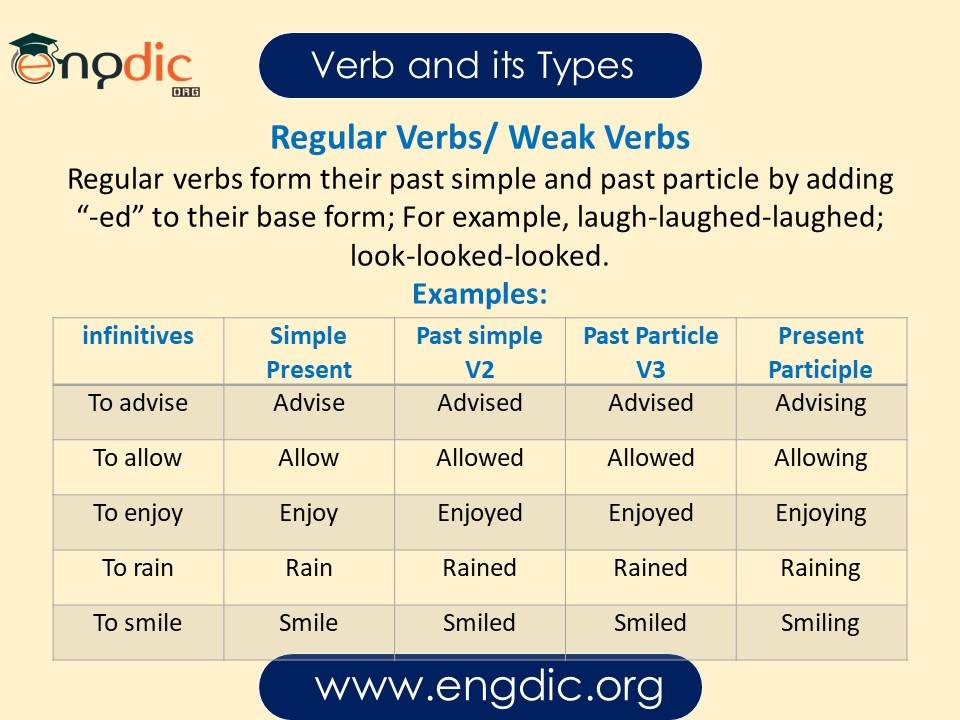
Transitive Verbs
A verb that takes a direct object is a transitive verb.
Examples:
- She does his duty.
- she learns her lesson.
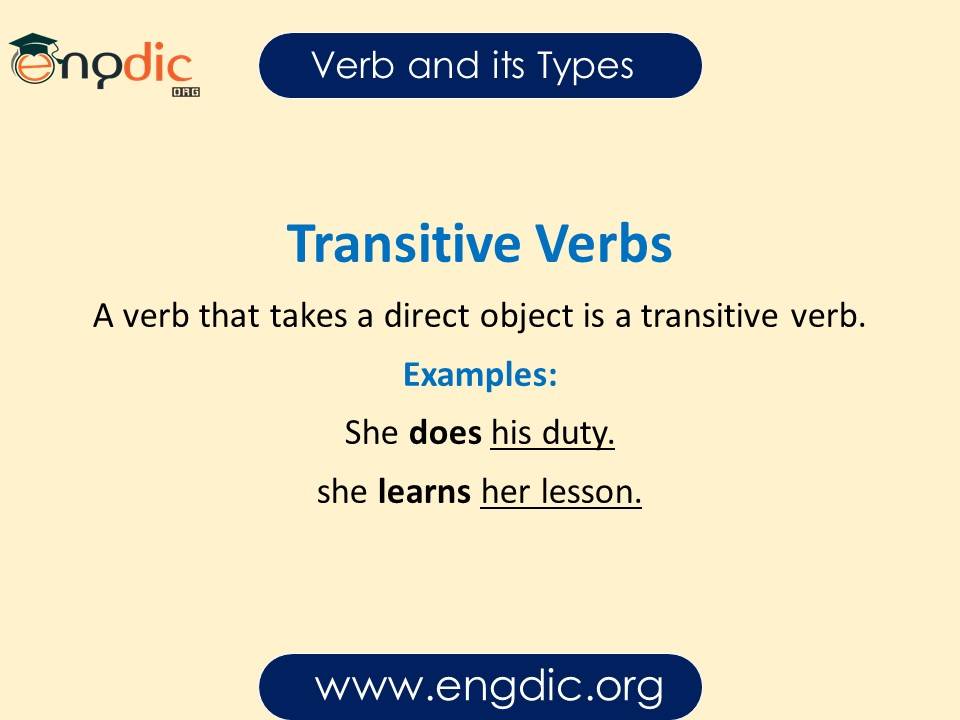
Intransitive verbs
A verb that does not take a direct object is an intransitive verb.
Examples:
- He runs fast.
- He walks slowly.
Ergative verbs
Many verbs function as transitive as well as intransitive verbs. A verb that can be either transitive or intransitive is called an ergative verb. In the following examples the verb, ‘Leave’ is an ergative verb.
Examples:
- The bus left early in the morning.
(There is no object in this sentence; therefore, the verb ‘left’ functions as an intransitive verb here.)

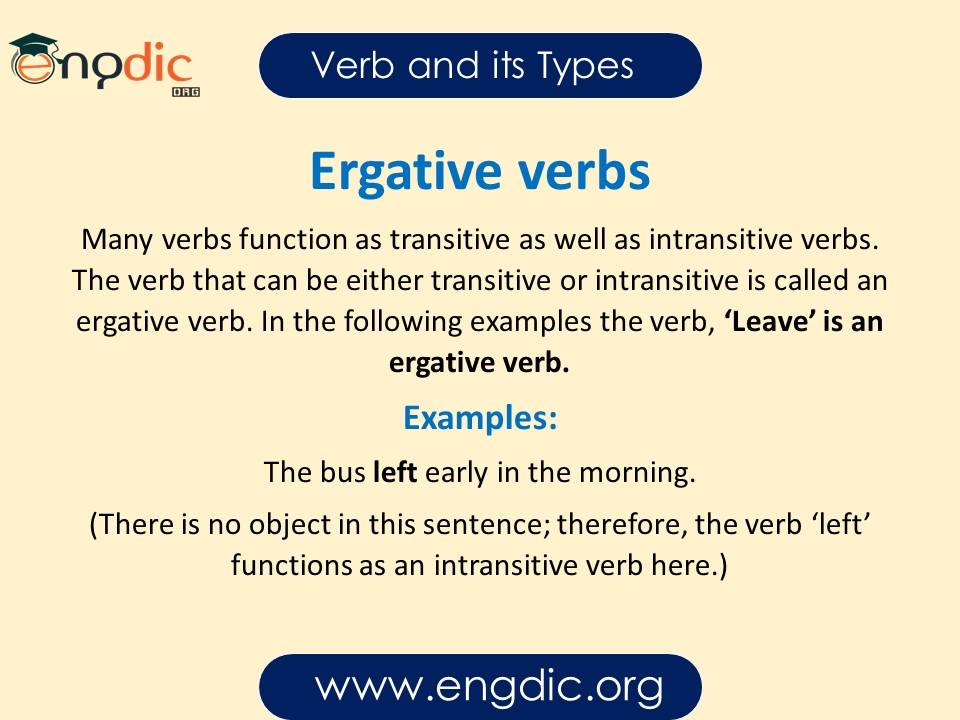
Phrasal verbs
A phrasal verb is a verb followed by a particle. The article could be a preposition or an adverb. It creates a meaning totally different from the original verb.
Examples:
- She has got a job.
- She gets up early in the morning.

Reflexive Verb
A verb that takes a reflexive pronoun as its object is a reflexive verb.
Examples:
- Be careful, you may cut yourself.
Here ‘yourself’ is a reflexive pronoun and cut is a reflexive verb.

Finite Verbs
A finite verb must have a subject. It is the main verb in an independent clause or a sentence. Finite verbs give information about gender, person, number, tenses, aspect, mood, and voice.
Examples:
Finite verbs are bold and infinite verbs are in underline form.
- A verb is needed in every sentence.
- I am explaining finite and non-finite verbs.
In English, there can be just one finite verb at the root of each clause; whereas the number of non-finite verbs can reach up to six or even more.
i.e. He is believed to have been asked to get himself medically checked.

Infinitive/Non-Infinite verb
A non-finite verb is also called an infinite verb. It does not have a subject. It does not express tenses or numbers. It cannot be the main verb in an independent clause. Unlike a finite verb, it typically works as an infinitive, participle, and gerund.
Example:
This particular sentence contains one finite verb underlined and multiple infinite verbs bolded.
- What did Imran want to have done about Hashem?

These were the important types of verbs after reading this detailed lesson on grammar you must have a knowledge about verbs and their types.
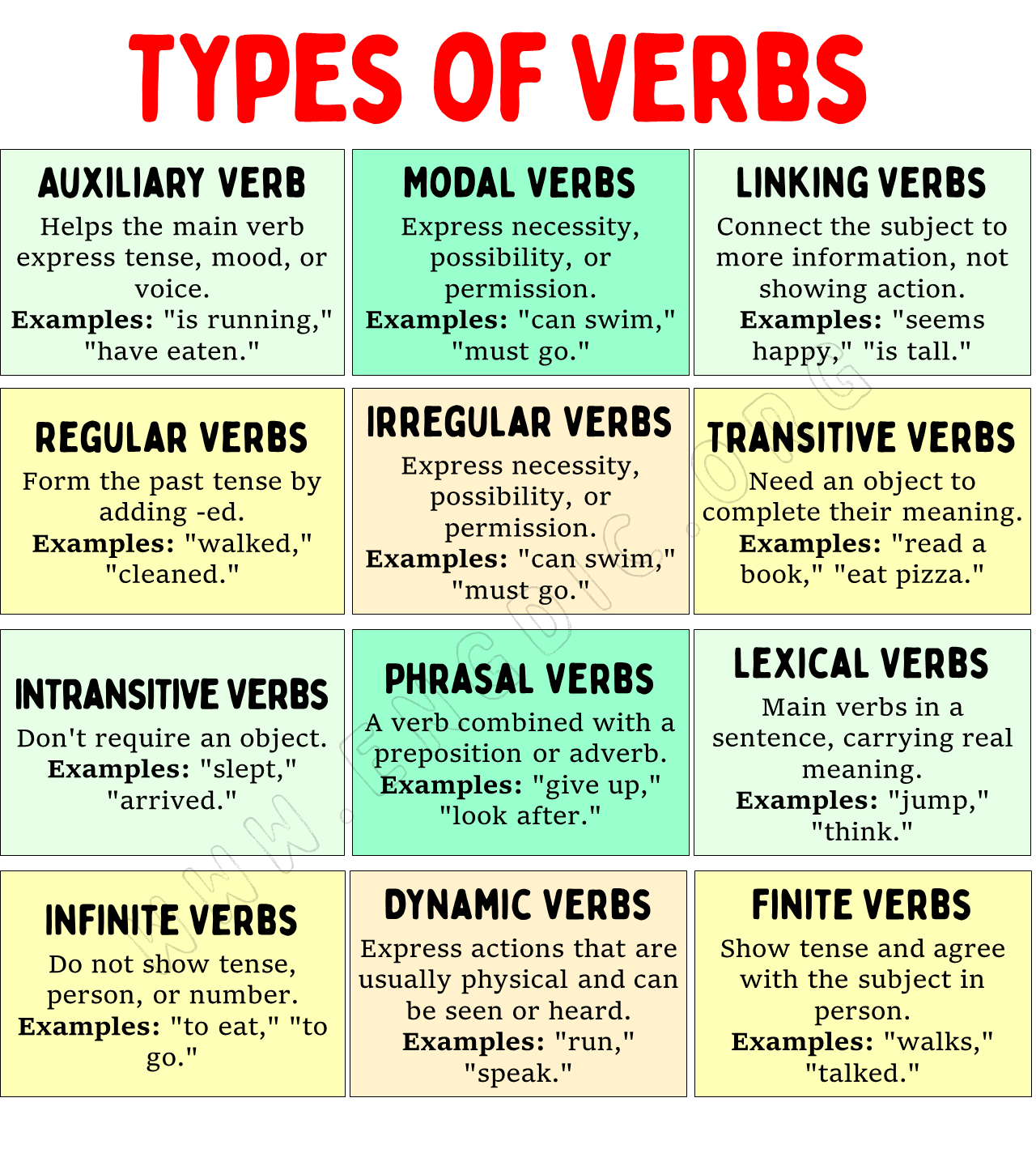
Download PDF (Types of the Verb)
Download this Lesson on ” Verbs and its Types” in PDF.

